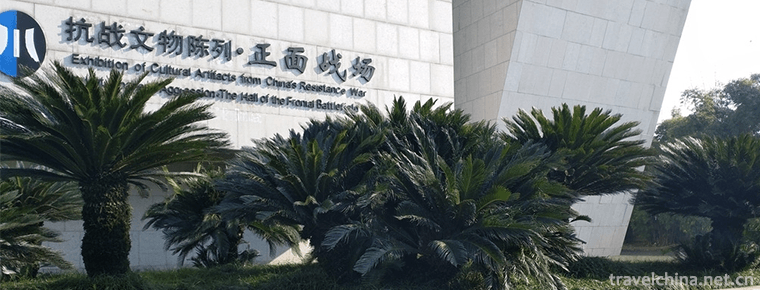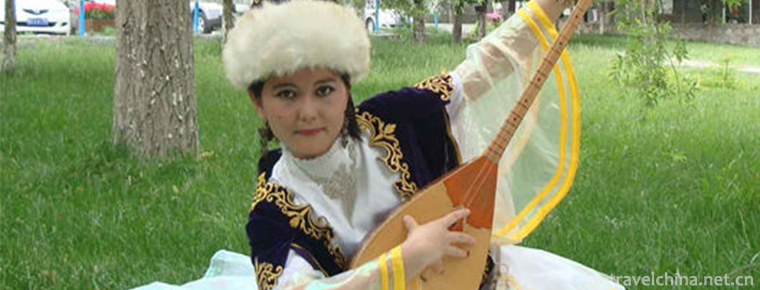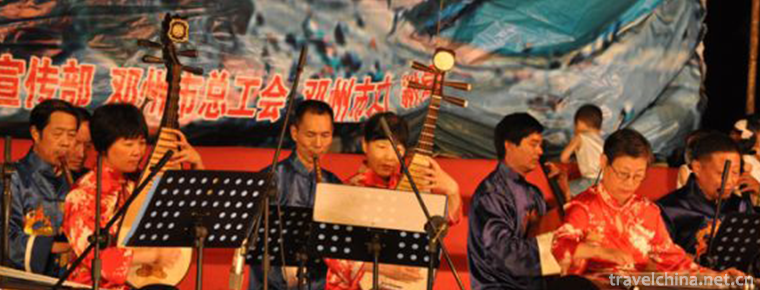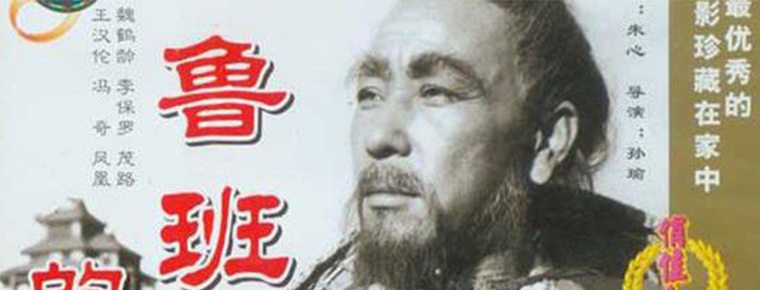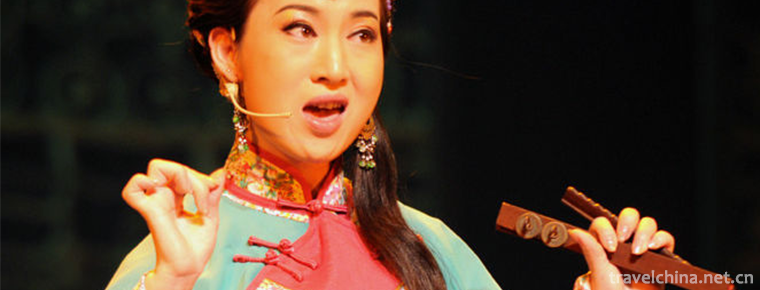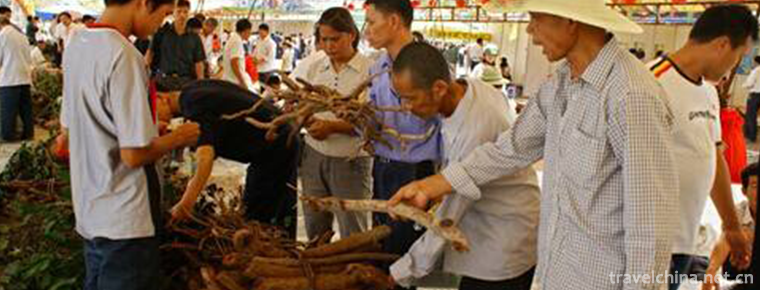Brewing technology of soy sauce
Brewing technology of soy sauce
Qian Wanlong soy sauce brewing technology is the traditional soy sauce brewing technology of Shanghai Bengang, and it is an ancient local traditional handicraft technology. It was selected into the second batch of national intangible cultural heritage list. Qian Wanlong Sauce Garden was founded in 1880 and was the "Guan Sauce Garden" at that time. Its soy sauce brewing technology has been continuously studied for three generations. By the early years of the Republic of China, it had produced "sunshine street oil" and "sunshine sanitary oil". The former had to be exposed to sunshine for three days in a vat, sunshine at night, roll and foam, and the production cycle lasted for two years before it could be brewed. Special sun-dried soy sauce has red-brown color, rich soy sauce fragrance, mellow body and long storage.
Brief introduction
For more than 100 years, Qian Wanlong has been living and developing in the original sauce garden site, and traditional handicraft techniques have been handed down from generation to generation. The "special sun soy sauce" brewed by traditional technology uses Northeast soybean without GM, and does not add any chemical additives. It has unique product characteristics. The essence of brewing technology is "good material, excellent koji, fine art, sun-drying". The key techniques are "eyes, mind, hand grinding, nose sniffing, oral examination". Twelve traditional techniques are: handling, (big) soybean soaking, steaming, mixing, koji making, making soy sauce, sun sauce, press sauce, stir-fry soy sauce, mixing soy sauce, sun sauce, brewing jar.
Because of market competition and other reasons, Qian Wanlong's good products can not sell at a good price, and the enterprises have been losing money year after year. However, the particularity of handicraft has resulted in the lack of successors. Enterprises are facing a severe challenge of survival and the loss of traditional brewing techniques.
historical origin
"Qian Wanlong Soy Sauce" was born in Qian Wanlong Official Sauce Garden in 1880, and has a history of more than 100 years.
Qian Jinnan, the founder of Qian Wanlong Sauce Garden, was a famous gentleman in Fengnanchuan County at that time. He was also the only "Pudong man" who wore the title of "red-crowned flower Ling" and "yellow horse jacket" to do business. Relying on the official power of friends nicknamed "Beef Five" in Guangxu Five Years (1880), he set up a "Bandung Sauce Garden" in Mofanglong, Nanshi City, Shanghai. Because of its good management, prosperous business and good reputation, three golden characters of "Guansauce Garden" were inscribed on the Qinglong signboard issued by Yamen, Jiangsu and Zhejiang Provinces in that year (this ancient signboard had suffered a lot and broke through the "Fourth Year" in the "Cultural Revolution". In the old, it is the old worker who hides in the shavings pile between carpenters that keeps it up to now.
In 1898 (Guangxu 23 years), his son Qian Ziyin took over the sauce garden and reopened the Qian Wanlong sauce garden in Zhangjiangfei, Pudong, after splitting up with the beef veteran.
During the period of the Republic of China, Qian Anbo, the third generation heir, created the heyday of the sauce garden family and produced the "sunning street oil" boutique. This kind of soy sauce needs to be exposed to the sun for three days, sunshine and night exposure, rolling foam, production cycle as long as two years before it can be brewed. At that time, the price of "sunning street oil" sold to the price of soybean oil. The product is famous in Nanchuan. Because of the shortage of supply and demand, we need to shorten the period of sunshine. So we adopt the method of combining sunshine and boiling, named "sunshine and sanitary oil". During the period from the victory of the Northern Expedition to the period before the War of Resistance Against Japan, the annual output of suntan oil was about 100,000 jin, and it was well-known in Shanghai. At that time, there was a saying in Shanghai: "A mouthful of crispy high bridge muffins is wonderful and ineffable Qianwanlong soy sauce".
At the beginning of the founding of New China, Qian Xianping, the owner of the fourth generation sauce garden, went to Kaisai Park in Taiwan. With the withdrawal of funds, only a few broken houses and more than 200 sauce jars remained. The production conditions were poor, and the production of specially sun-dried soy sauce, an old brand product, was discontinued. In 1954, the public-private joint venture was transformed into the local state-owned Zhangjiang Brewery, and in 1984 it was renamed the Shanghai Qian Wanlong Brewery.
In the mid-1970s, technical renovation was carried out. Teachers and technicians were organized to tackle the key problems of restoring traditional technology and scientific research, and a special "sun-dried soy sauce" featuring Jiangnan and Shanghai was created. In March 1983, it was the first time that soy sauce was exported to foreign countries, which pioneered the export of soy sauce in Shanghai. It has been exported to more than 10 countries and regions, such as Hong Kong, Denmark and Norway. The products have won many honors such as "Shanghai High Quality Products" and the Silver Prize of the First Food Exposition of China, and the special products of Antarctic Science and Technology Examination Team. In 1993, the Ministry of Domestic Trade awarded Qian Wanlong the title of "old Chinese brand". The traditional sun-cured soy sauce has the characteristics of reddish-brown color, rich sauce fragrance, mellow body, long storage, and is welcomed by customers at home and abroad after it is put into the market.
Traditional technology
Qian Wanlong Sauce Garden is the processing technology of the three major sauce groups in Shanghai, Yangang and Ningbang in late Qing Dynasty. Traditionally, the techniques are: beating with sticks, steaming with earth stoves, pressing residue on wooden frames, self-testing of soy sauce color, tasting with salty and light mouths, fermenting, drying and storing in soy sauce jars, shoulder-to-shoulder picking of oil output and delivery. The main raw materials are soybeans and flour. The facility only has simple tools such as bamboo plaque, bamboo groove, cylinder, wood press and so on. The main production technology is natural sunning, spring preparation, summer sauce, autumn sunning, winter sauce; after the sauce is stored for one year, the sauce is pressed out. Because the old sauce grains are packed in cloth bags and pressed by wooden press, the first time is called oil set, the second time is called double oil set, and the third time is called double oil set. Its technological process is as follows: material selection and soaking (one day and night) cooking soybean starter making (seven days) fermentation of sauce mash (three days) storage and pressing for one year oil exposure (six to eight months). The production cycle is as long as two years. Feeding in spring and harvesting in winter. Hundreds of cylinders grew in long rows, forming a "sunshine street", so the soy sauce produced is called "sunshine street oil". At that time, the workers lived in Yuanfang for a long time, and the labor intensity was very high. Every day, they carried grains of sauce and pressed tens of thousands of kilograms of stones. Because of the selection of concentrate, the selection of low fat, high protein small particles of soybeans and workers'long-term day and night care, highlighting the traditional brewing process of "sunshine" process, and finally produced a thick texture, good taste, red color, full fragrance, long-term storage of the characteristics of "sunshine street oil" and "sunshine Street sanitary oil" after.
After 100 years of development, Qian Wanlong soy sauce has developed 16 series of products, such as brewing red, original juice red, special brewing and fine wine. Among them, Lentinus edodes soy sauce has won the title of high-quality product of the Ministry of Commerce of the State. Special sun-dried soy sauce has won the title of high-quality product of Shanghai, silver prize of the first national food exposition, and high-quality product of Shanghai for three consecutive years from 2003 to 2005. The products are sold to more than 20 countries. Countries and regions are "old Chinese brands" certified by the Ministry of Trade.
Due to the influence of market economy, grain prices are constantly adjusted, but soy sauce prices are not adjusted, and even a bag of soy sauce prices are not equal to a bottle of mineral water. At the same time, foreign products are flooding the market, many of them are blended chemical soy sauce, low prices, strong competitiveness, resulting in vicious competition. The real material Qian Wanlong brewed soy sauce has been losing money year by year due to the price adjustment of grain and the increase of production cost in various aspects such as labor, etc. If we want to develop, we need to invest a lot of money, which is unbearable for enterprises. Therefore, "Qian Wanlong Soy Sauce" is in an endangered state.
List of Selected Articles
Among the newly released list of the second batch of national intangible cultural heritages, the traditional Qian Wanlong soy sauce brewing skills of Shanghai Bengang are on the list. Qian Wanlong is the "living fossil" of Shanghai brewing industry in the past 100 years. It is also a living and developing ancient bioengineering. Reporters learned that the relevant departments of Pudong New Area are preparing to construct Qian Wanlong Brewing Culture Industry Museum - whether to keep a small foreign building in its original site or to relocate it to another site, which is still in the process of project demonstration.
Brewing method
In the antique open-air drying ground, there are more than 300 large sauce jars with sauce. You can smell a special flavor of soy sauce in the garden. "These jars are"old soup bottom"handed down from generation to generation, the oldest one has been for hundreds of years," the teachers said. These large sauce jars have been repaired several times outside the traces, inside the different depth of the sauce lines are silently telling their long history of brewing.
Zhang Huizhong, general manager of Qian Wanlong Company, told reporters: "Although the soy sauce brewed by natural sunshine needs a long period and high cost, it retains a strong flavor of Shanghai Bengang."
Fortunately, the sauce garden on the edge of the old town is not silent because of the relocation. It will soon be transformed into the only museum in the brewing industry in the country. A small foreign building built in 1933 in the factory area is conserved.
Community residents will be invited to experience the ancient brewing.
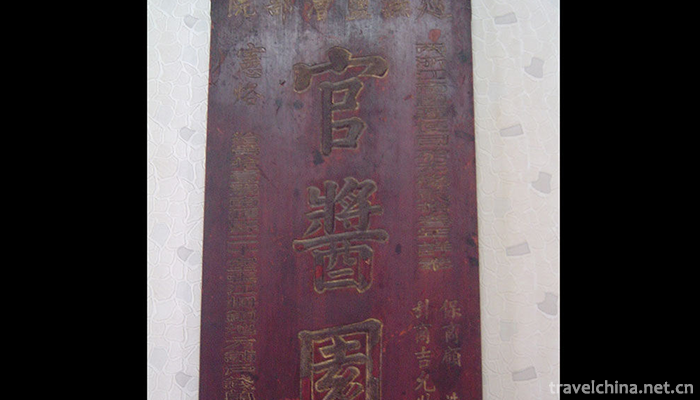
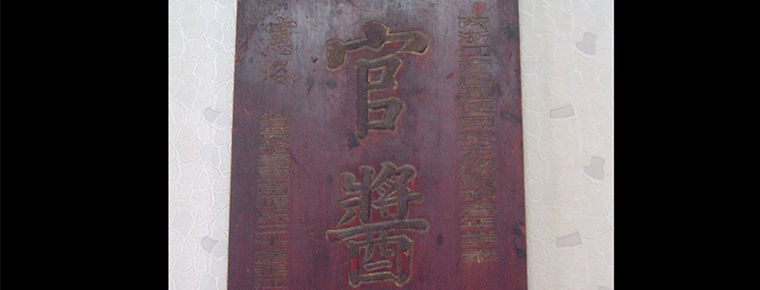
Brewing technology of soy sauce
-
Red Leaf Valley Eco cultural Tourist Area
Red Leaf Valley Eco-cultural Tourist Area, National Key Scenic Spot, National AAAA Class Tourist Spot. Red Leaf Valley is located in the southern mountain area of Jinxiuchuan Township
Views: 223 Time 2019-01-16 -
jianchuan museum cluster
Jianchuan Museum is called Jianchuan Museum Settlement in Chengdu City. Founded by private entrepreneur Fan Jianchuan, it is located in Anren Town, Dayi County, a small museum town of China
Views: 238 Time 2019-01-21 -
The tru Valley
Turugou is located in Liancheng Forest, Yongdeng County, 160 kilometers northwest of Lanzhou City. It belongs to the eastern foot of Qilian Mountains.
Views: 223 Time 2019-02-22 -
Kazakhstan 62 Kwohner
Kazakhstan 62 Kwohner 62 Kwohner is Kazakh folk classical music, which means "62 suites". It is a comprehensive art mainly composed of instrumental music, accompanied by folk songs, dances,
Views: 218 Time 2019-05-02 -
Silk Strings of Laohekou
Laohekou Silk String is a traditional folk music in Xiangyang City, Hubei Province. Laohekou Silk String is different from other forms of folk literature and art. It is a music that combines folk arti
Views: 305 Time 2019-05-11 -
Legend of Luban
productivity and the change of production tools have created conditions for the improvement of technology.
Views: 268 Time 2019-05-15 -
Run Dong luo dongdong
"Lolola is a local traditional folk music in Hubei Province. It belongs to the first provincial intangible cultural heritage in Hubei Province. Jianli belongs to the Chu area of Jianghan since an
Views: 312 Time 2019-05-15 -
Shaoxing Lotus Flower Fall
Shaoxing Lotus Fall, also known as Lotus Music and Lotus Fall, is a traditional form of folk art in Shaoxing, Zhejiang Province. It is named because of the help singing such as "Lili Lianhua Luo&
Views: 151 Time 2019-06-14 -
Drug Market Customs
Pharmaceutical market is a trade fair held regularly in the centralized distribution center of traditional Chinese medicines with historical origin. There are more than 110 centralized distribution ce
Views: 225 Time 2019-07-11 -
Chengdu Medical College
Chengdu Medical College is a full-time general medical college organized by the Sichuan Provincial People's Government. It is located in Chengdu, the capital of Sichuan Province. Its history can be tr
Views: 178 Time 2019-08-31 -
Sichuan Agricultural University
Sichuan Agricultural University is a national "211 Project" with the characteristics of biotechnology, the advantages of agricultural science and technology, and the coordinated development
Views: 418 Time 2019-08-31 -
Guangyuan history and culture
"Guangyuan daughter's day, women swim in the river bay", this is a kind of folk cultural activities, this is the chapter described by Guangyuan daughter's day. On the first daughter's day in 1988, the water area of Jialing River in front of huangze temple was
Views: 154 Time 2020-12-15

